10 Non-invasive Neurotechnologies About to Transform Brain Enhancement and Brain Health
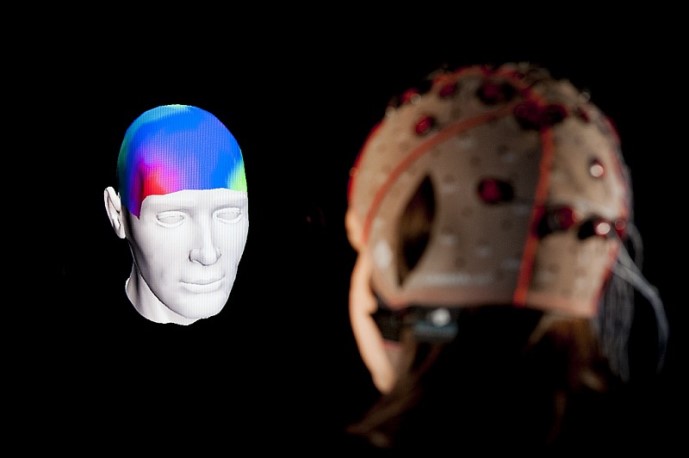 .
.
30,000+ scientists and professionals gathered for the annual Society for Neuroscience conference in Chicago last month, proving the growing interest and activities to better understand the inner workings of the human brain, and to discover ways and technologies to enhance its health and performance.
Now, which of all those ongoing efforts are closer to touching our lives, to empower consumers, patients and health professionals?
To answer that question, we recently examined the worldwide landscape of Pervasive Neurotechnology patents, given that investment in intellectual property is a crucial signal in the life-cycle of technology commercialization. We paid extra attention to non-invasive neurotechnologies which, being digital, are scalable and relatively inexpensive, and that, being non-invasive, pose few if any negative side-effects (the main exception to this rule being #10 below, which is why we place it last).
Through our year-long analysis of thousands of patents, we uncovered ten innovative brain health and brain enhancement systems on the cutting edge, that, in our estimation, are likely to go mainstream over the next few years.
10 Non-invasive Neurotechnologies About to Transform Brain Health and Brain Enhancement
1. Big Data-enhanced diagnostics and treatments
As the costs of computing power, cloud accessibility and hardware sensors dwindle, brain health systems can leverage measurements taken from a far broader swath of the population than ever before possible. And this analysis 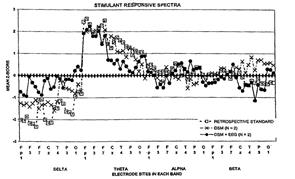 helps understand precisely where an individual’s readings lie on the distribution curve of health to disease, drives the ability to understand with nuance how one’s readings changes over time, and allows better discernment of proper diagnoses and treatments based on the efficacy of treatments with others having similar brain signatures.
helps understand precisely where an individual’s readings lie on the distribution curve of health to disease, drives the ability to understand with nuance how one’s readings changes over time, and allows better discernment of proper diagnoses and treatments based on the efficacy of treatments with others having similar brain signatures.
Companies like CNS Response and Advanced Brain Monitoring are already deploying systems that harness the power of big data, exemplified by neurometrics-driven report systems such as in the image to the right.
–> Patent Image: Data Illustrating Patient Stimulant Responsiveness Spectrum, by CNS Response
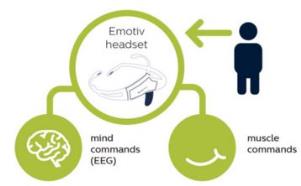
2. Brain-Computer Interfaces for device control
Brain Computer Interfaces (BCIs) link the commands of our thoughts to the devices of the world. The global BCI market is expected to reach 1.5 billion by 2020, of which 85% is estimated to be non-invasive.
Companies like Emotiv and NeuroSky are advancing the state of BCI technology, while other organizations are developing the external systems and ecosystems to interact with BCIs. Phillips has patents describing home medical systems that remotely monitor health via EEG, helping patients suffering from ALS (commonly known as Lou Gehrig’s disease), for example, to control home appliances via BCIs.
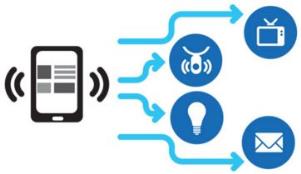 –> Example: Philips-Accenture Project to Control Home Devices via the Mind
–> Example: Philips-Accenture Project to Control Home Devices via the Mind
- User sends brain commands
- Wearable display shows navigation interface
- Digital app reads commands, connects devices
- Smart products are activated
3. Real-time neuromonitoring (plus robotic aids)
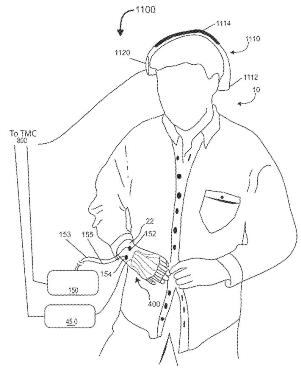 A good number of companies, including Medtronic, Neuropace and St. Jude Medical, are developing systems to actively monitor brain activity and respond in real-time with appropriate treatments.
A good number of companies, including Medtronic, Neuropace and St. Jude Medical, are developing systems to actively monitor brain activity and respond in real-time with appropriate treatments.
These systems can discern symptoms leading up to an undesirable brain event (such as a seizure), and provide pre-emptive treatments to mitigate or altogether thwart epileptic activity. Some monitoring systems are coupled with other assistive devices, such as robotic aids to enable patients suffering from neurological disorders (such as ALS) to regain lost motor control.
–> Patent Image: Coupling Neural Stimulation with Robotic Assistance.
4. Neurosensor-based vehicle operator systems
Systems employing neural detection devices to monitor vehicle operator alertness (or a lackthereof) and take preventative measures with driver stimulation or vehicle autopilot/ shutdown systems are described by multiple patents.
Whether due to inattentiveness (for example texting while driving) or drowsiness, new vehicle-integrated systems can assess real-time operator fitness. The US Army, automotive companies like Toyota, start-ups like Freer Logic, medical device makers and insurers are all patenting inventions addressing this concern.

–> Patent Image: Vehicle Operator Systems Augmented with EEG Signal Processing
5. Cognitive training videogames
Software applications accessible online and via mobile devices include gaming systems that target specific cognitive and/or emotional systems of the brain.
Companies like Posit Science and Lumos Labs have secured patent protection (and significant market traction) on products in this area. A patent recently issued to Lumos Labs for enhancing fluid intelligence and working memory through mental manipulation of memorized objects is illustrative.
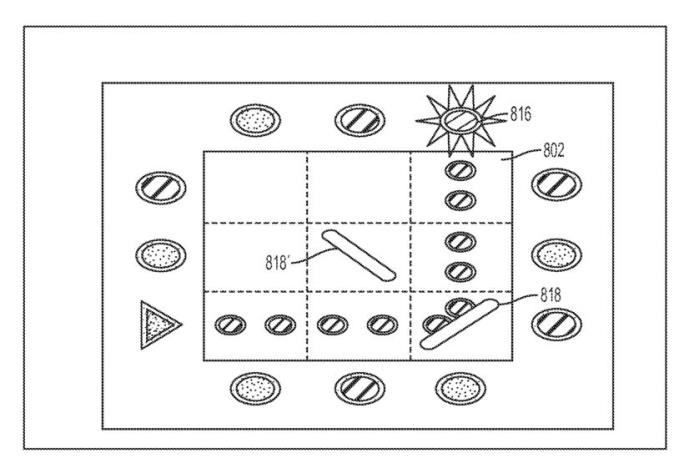
–> Patent Image: Can you determine the pinball path after bumpers (818) disappear?
6. Brain-responsive computing systems
As Microsoft CEO Sataya Nadella states:
We are moving from a world where computing power was scarce to a place where it now is most limitless, and where the true scarce commodity is increasingly human attention.
A recent study by Microsoft finds that 68% of early tech adopters and 67% of heavy social media users really have to concentrate hard to stay focused on tasks. So large tech companies are patenting systems to improve productivity and worker output, for example by using EEG signals to recognize user’s mental state and tailor the computing experience.
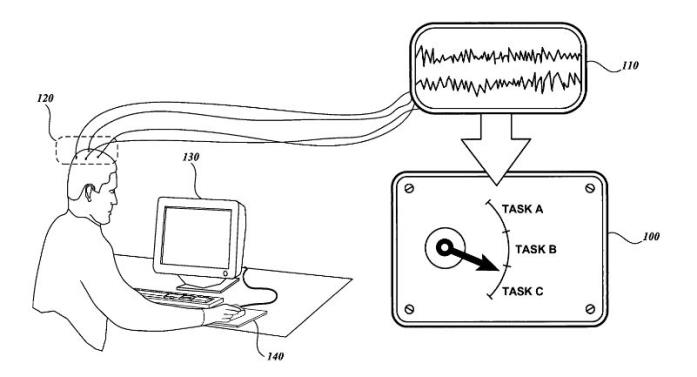
–> Patent Image: Classifying user-tasks based on brainwave data
7. Virtual Reality treatments, especially in conjunction with EEG and/ or tDCS
Whether for treating PTSD and phobias through exposure therapy, or assisting surgeons in the operating room, virtual-reality is quickly gaining momentum.
Medical tech companies such as Medtronic and Brainlab, and consumer research firms such as Nielsen are building significant IP portfolios in the area. The following patent by Evoke Neuroscience shows the interplay between virtual reality, EEG and transcranial direct current stimulation (tDCS).

–> Patent Image: Virtual Reality (VR) Neurotechnology
8. “Mindful” wearables
Wearables are being designed to improve not just physical health but mental 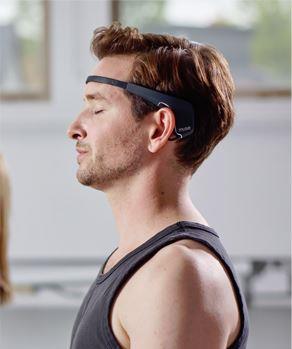 well-being as well. Meditation apps in tandem with consumer EEGs like InteraXon’s Muse aim to help users build concentration and self-regulation skills.
well-being as well. Meditation apps in tandem with consumer EEGs like InteraXon’s Muse aim to help users build concentration and self-regulation skills.
Even general-purpose fitness wearables are starting to include mental health and training applications. Jawbone (through its subsidiary BodyMedia) has secured patents that consider physiological and contextual factors.
–> Patent Image: Mental Health Applications of Wearable Devices
9. Collaborative cognitive simulations
These are systems that focus on improving learning and skill acquisition across the extended workforce through online interactive platforms and cognitive simulation models. Human capital-intensive organizations such as AT&T and Accenture, and start-ups such as Applied Cognitive Engineering, are developing multiple applications in the area, and securing relevant intellectual property rights.
–> Patent example: System method and article of manufacture for creating collaborative application sharing
10. Electrical and magnetic brain stimulation
These are technologies that can influence brain 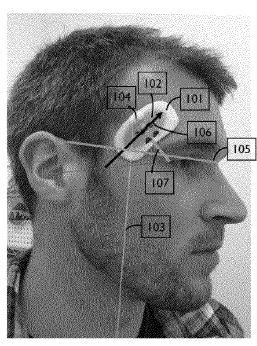 activity via magnetic fields or electrical impulses, and they are becoming increasingly common. Multiple hospitals and clinics already offer treatments based on brain stimulation, DARPA has awarded contracts to develop systems to augment memory with targeted electrical stimulation techniques, and consumers can buy wearable devices claiming to induce an array of brain states from calming to energizing.
activity via magnetic fields or electrical impulses, and they are becoming increasingly common. Multiple hospitals and clinics already offer treatments based on brain stimulation, DARPA has awarded contracts to develop systems to augment memory with targeted electrical stimulation techniques, and consumers can buy wearable devices claiming to induce an array of brain states from calming to energizing.
–> Patent Image: Wearable Transdermal Electrical Stimulation Device
This patent comes via Thync, an early-stage company backed by Khosla Ventures. Other companies pushing the boundaries of brain stimulation technology include St. Jude Medical, Brainlab and Neuronetics.
Now that we have reviewed some of the exciting neurotechnologies ahead, we need to step back for a second. Which of these technologies will deliver the most value, and in what context? How will innovative assessments and therapies be validated, adopted, regulated and commercialized? How do we maximize the benefits and minimize the risks?
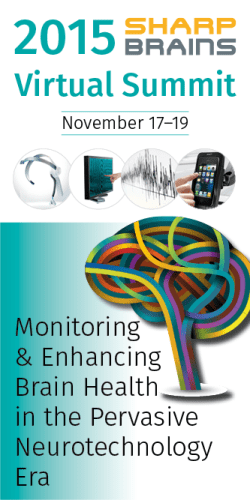 Those questions constitute, in essence, the Agenda for the 2015 SharpBrains Virtual Summit taking place next week, where over 200 pioneers and experts will gather around a virtual table to discuss the latest, the next, and how to harness it all to improve work and life.
Those questions constitute, in essence, the Agenda for the 2015 SharpBrains Virtual Summit taking place next week, where over 200 pioneers and experts will gather around a virtual table to discuss the latest, the next, and how to harness it all to improve work and life.
Please consider joining us!
– Alvaro Fernandez, named a Young Global Leader by the World Economic Forum, runs SharpBrains, an independent market research firm tracking health and wellness applications of brain science. He is an internationally-known speaker and expert, and has been quoted by The New York Times, The Wall Street Journal, New Scientist, CNN, and more.
– Nikhil Sriraman is a patent attorney admitted to practice before the United States Patent and Trademark Office (USPTO). Nikhil has held positions at the USPTO, IP law firms and in-house at Fortune 500 companies. He currently serves as Primal’s Vice President of Intellectual Property, as well as SharpBrains’ Intellectual Property Analyst.


